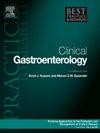急性肝衰竭预后模型的历史演变和更新“急性肝衰竭预后模型”。
IF 3.2
3区 医学
Q2 GASTROENTEROLOGY & HEPATOLOGY
Best Practice & Research Clinical Gastroenterology
Pub Date : 2024-12-01
DOI:10.1016/j.bpg.2024.101957
引用次数: 0
摘要
急性肝衰竭(ALF)是一种罕见的动态综合征,是严重急性肝损伤(ALI)的后遗症。根据病因、患者年龄和入院时脑病的严重程度,其死亡率从50%到75%不等。随着重症监护技术的改进,ALF的无移植生存率随着时间的推移而提高。及时识别仅靠药物干预不太可能存活的患者至关重要,因为这些患者可能迅速发展为多器官衰竭,使肝移植无效。目前临床实践中使用的各种预测模型、生物标志物和基于人工智能的模型,每种模型都有其谬误。国王学院医院标准(KCH)最初建立于1989年,用于识别由扑热息痛过量或其他原因引起的急性肝衰竭(ALF)患者,这些患者不太可能通过常规治疗得到改善,可以从肝移植中获益。从那时起,各种模型被开发出来并在世界范围内得到验证。大多数模型包括年龄、肝病病因、脑病分级和肝损伤标志物,如INR、乳酸、因子V水平、因子VIII/V比值和血清胆红素。但目前可用的模型都不是动态的,在预测无移植生存方面缺乏准确性。人们对开发预后血清生物标志物越来越感兴趣,这些标志物单独使用或与临床模型结合使用可提高ALF预后预测的准确性。基因组学、转录组学、蛋白质组学和代谢组学以及机器学习和人工智能(AI)算法是开发高精度预测模型的兴趣领域。总的来说,ALF预后模型的未来是有希望的,正在进行的研究为更准确、个性化和动态的风险评估工具铺平了道路,这些工具可能会在这种具有挑战性的情况下挽救生命。本文总结了ALF预测模型的历史和未来趋势。本文章由计算机程序翻译,如有差异,请以英文原文为准。
Prognostic models in acute liver failure-historic evolution and newer updates “prognostic models in acute liver failure”
Acute liver failure (ALF) is a rare and dynamic syndrome occurring as a sequela of severe acute liver injury (ALI). Its mortality ranges from 50% to 75% based on the aetiology, patients age and severity of encephalopathy at admission. With improvement in intensive care techniques, transplant-free survival in ALF has improved over time. Timely recognition of patients who are unlikely to survive with medical intervention alone is crucial since these individuals may rapidly develop multiorgan failure and render liver transplantation futile. Various predictive models, biomarkers and AI-based models are currently used in clinical practice, each with its fallacies. The King's College Hospital criteria (KCH) were initially established in 1989 to identify patients with acute liver failure (ALF) caused by paracetamol overdose or other causes who are unlikely to improve with conventional treatment and would benefit from a liver transplant. Since then, various models have been developed and validated worldwide. Most models include age, aetiology of liver disease, encephalopathy grade, and liver injury markers like INR, lactate, factor V level, factor VIII/V ratio and serum bilirubin. But none of the currently available models are dynamic and lack accuracy in predicting transplant free survival. There is an increasing interest in developing prognostic serum biomarkers that when used alone or in combination with clinical models enhance the accuracy of predicting outcomes in ALF. Genomics, transcriptomics, proteomics, and metabolomics as well as machine learning and artificial intelligence (AI) algorithms are areas of interest for developing higher-precision predictive models. Overall, the future of prognostic models in ALF is promising, with ongoing research paving the way for more accurate, personalized, and dynamic risk assessment tools that can potentially save lives in this challenging condition. This article summarizes the history of prognostic models in ALF and future trends.
求助全文
通过发布文献求助,成功后即可免费获取论文全文。
去求助
来源期刊
CiteScore
5.50
自引率
0.00%
发文量
23
审稿时长
69 days
期刊介绍:
Each topic-based issue of Best Practice & Research Clinical Gastroenterology will provide a comprehensive review of current clinical practice and thinking within the specialty of gastroenterology.

 求助内容:
求助内容: 应助结果提醒方式:
应助结果提醒方式:


